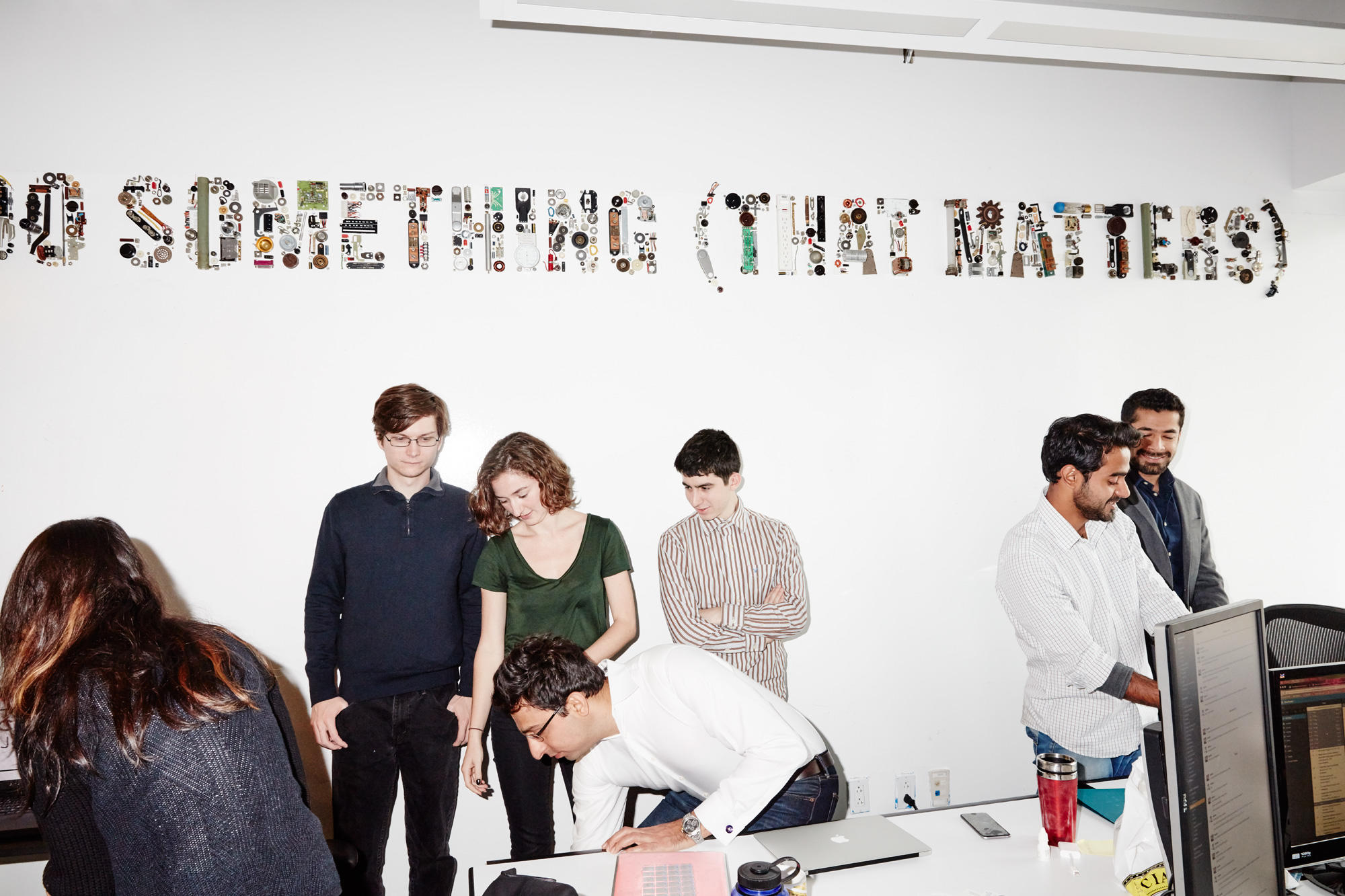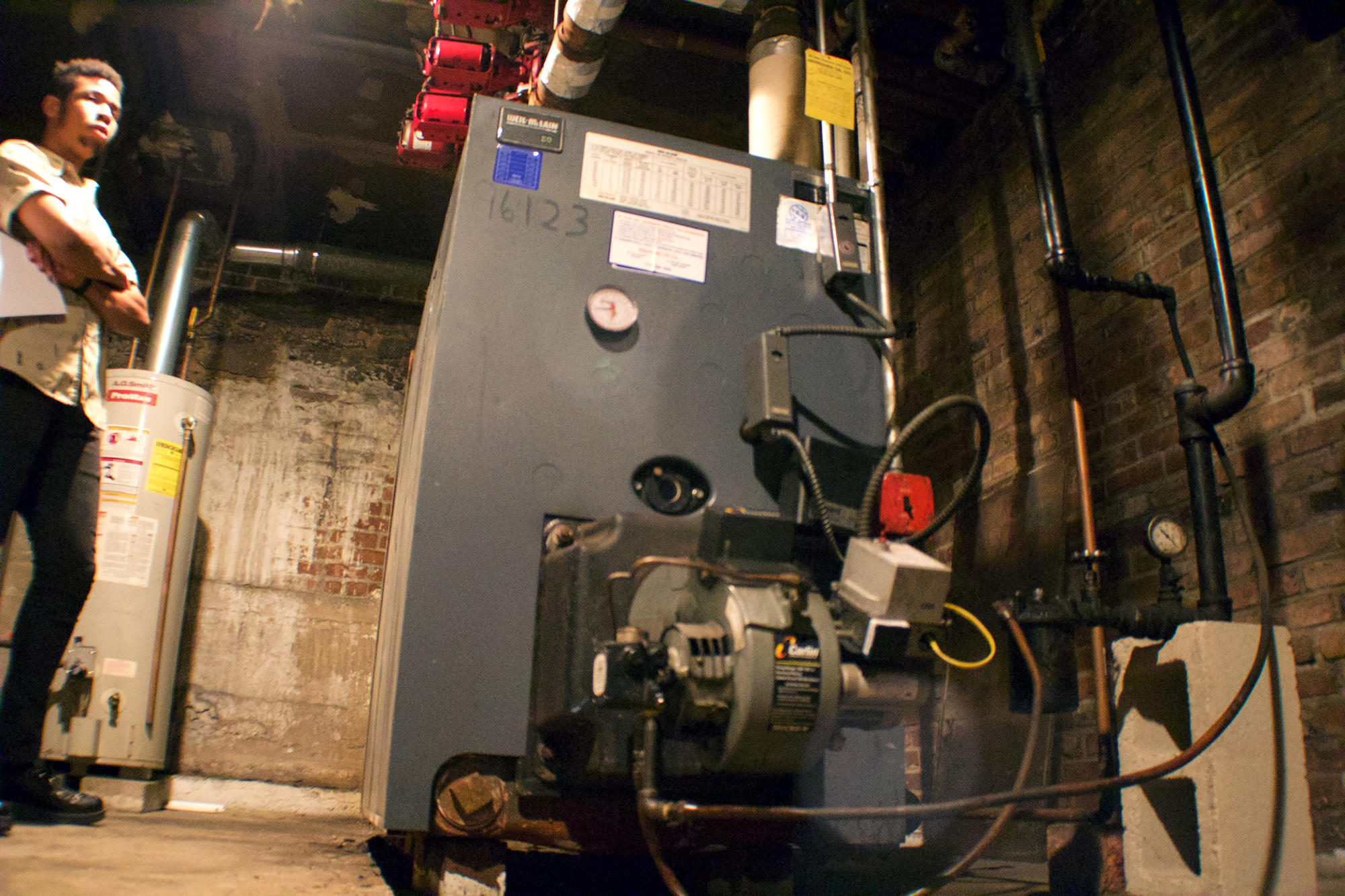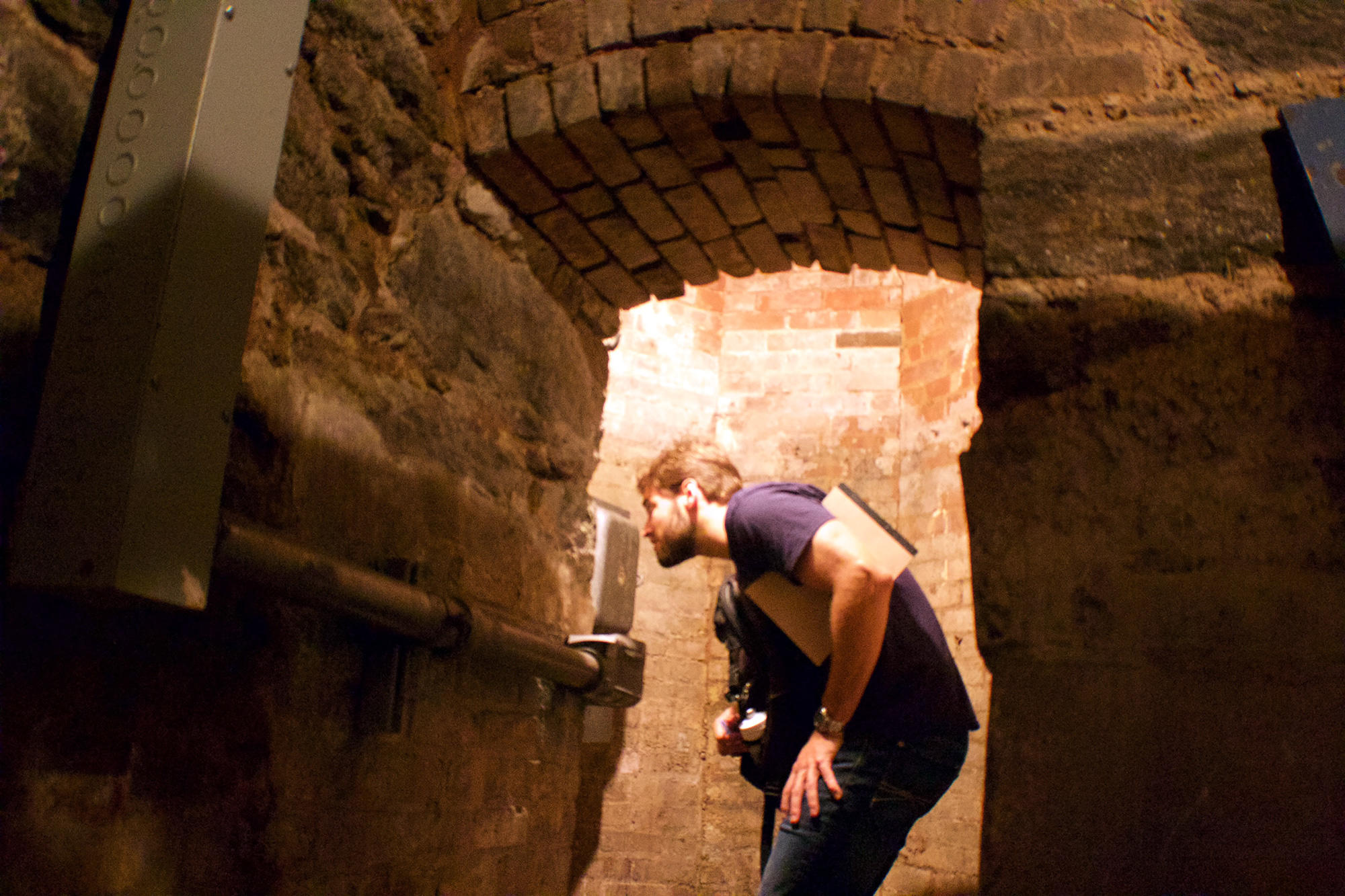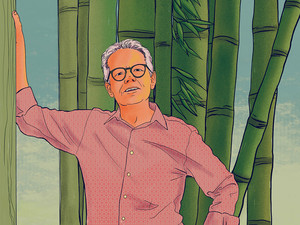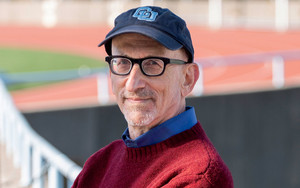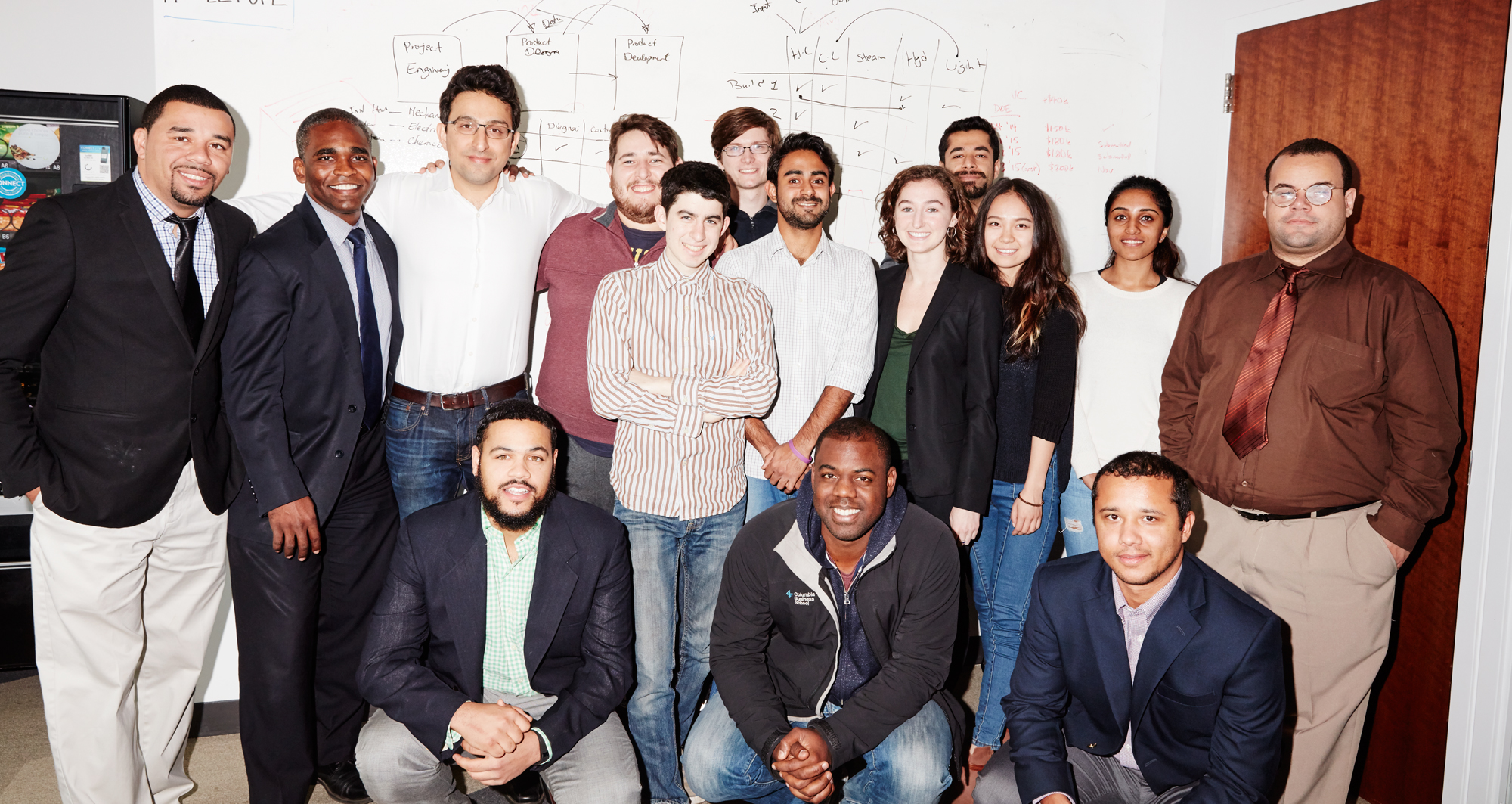
It was May of 2013, and Donnel Baird ’13BUS had a decision to make.
He was about to finish business school — just one presentation for one class stood between him and a diploma. The only problem? At the exact same time as his final, Baird was scheduled to make another presentation a few hundred miles south of Uris Hall: at the White House.
“The professor said he’d fail me if I missed the presentation,” Baird says. “And I’d never failed anything before in my life.”
But there was a lot at stake in the White House visit, too. Baird had recently founded BlocPower, a company that retrofits buildings in low-income neighborhoods with solar panels and energy-efficient equipment. After a slow start in fundraising, he was up for a two-million-dollar contract with the US Department of Energy.
Baird made the trip, failed the class, and won the contract. It was, he says, the best professional decision he’s made.
In addition to the funding, the contract came with a challenge: BlocPower was expected to match the amount with private-sector contributions. That summer, Baird met with over 250 investors and was still falling short.
“But because I’d failed that one class, I had to take a make-up class in the fall,” Baird says. “It ended up being Steve Blank’s Lean Launchpad, which was a hands-on, practical course taught by a guy who had launched eight successful startups. More than any other class, it taught me what I needed to know to really start the company.”
That fall, Baird made another crucial connection. At a Columbia Entrepreneurship board meeting, he met Chris Dixon ’96GS, ’99GSAS, a general partner at the enormously influential Silicon Valley venture-capital firm Andreessen Horowitz. Dixon and firm cofounder Ben Horowitz ’88CC ended up investing in the company, and also helped the BlocPower team figure out how to refine their software-development strategy. By efficiently analyzing financial data for each customer, the software catapulted the company’s potential client list from a few to hundreds.
“It ended up being the difference between having an idea for a startup and actually having a startup,” Baird says.
For Baird, the idea was never the problem. It had been percolating since his childhood in Bedford-Stuyvesant, Brooklyn, which was then an almost entirely black, low-income neighborhood.
Baird’s parents, who had fled the Caribbean nation of Guyana after an economic decline in the 1980s, raised him and his younger sister in a one-bedroom apartment. The heating system was old, decrepit, and unreliable. Outside the apartment, people were selling crack cocaine on the street corners, and gunfire was common.
When Baird was ten, his mother saw a woman and her baby gunned down on the street and decided she’d had enough. She and Baird’s father divorced, and she moved her children to Atlanta. Baird won a scholarship to a private high school there and went on to college at Duke. But a decade after he had left, Baird returned to Brooklyn, where he got a job as a community organizer in Brownsville — one of New York’s poorest neighborhoods.
“Brooklyn was in bad shape when I was growing up there,” Baird says. “But I always had more educational opportunities than other kids in the neighborhood. So I always wanted to give back.”
In Brownsville, Baird’s goal was to help community members advocate for themselves, which often meant petitioning officials to improve local facilities, such as housing projects, schools, and houses of worship.
“People really relied on the community organizations,” Baird says. “The churches were the heartbeat of the neighborhood.”
Baird started to grasp how outdated many of the buildings were, which was not only an environmental concern but a financial one, especially in a neighborhood so desperate for resources.
“In the hood, everyone has their window open, even in the dead of winter,” he says. “The boilers are old and the buildings overheat. But someone is still paying for that heat.”
There was a tremendous amount of work to be done improving these buildings — and, as it happened, a tremendous number of workers available to do it. Brownsville, like most low-income neighborhoods, was plagued with unemployment, which had driven crime rates up and plunged the neighborhood further into poverty. Baird wondered if there was any way to connect the dots.
“When I was working in Brownsville, a third of the men were incarcerated. After they had served their time, they came back to the neighborhood and had nothing to do. No one would hire them. It was impossible for anyone to get back on their feet. But with the right employment opportunities, it seemed like there was a lot of potential.”
In 2007, Baird left Brooklyn to join the first presidential campaign of Barack Obama ’83CC. When Obama was elected, Baird moved to Washington and partnered with the administration on a project that used stimulus money to create green construction jobs for underserved populations in the District of Columbia. The project was successful — using $2.5 million, they were able to update four hundred homes and train twenty formerly unemployed workers while providing them with health insurance and a salary high enough to support a family of four. Based on the results in Washington, similar projects were implemented in Portland, Oregon; Milwaukee; and New York.
Baird knew that he wanted to start a company with a similar goal in Brooklyn. But while he was familiar with the neighborhoods and their problems, his business experience was lacking. “I literally didn’t know what a stock was,” he says.
He enrolled at Columbia Business School. Though he was interested in social entrepreneurship, he had expected that he would have to work in the corporate world before launching his company. Instead, his professors encouraged him to jump in headfirst. Entrepreneurship professor Barbara Roberts, who had been working with small-business owners in Harlem to help them increase their profit margins, provided Baird with some of his first clients. By the middle of his second year, Baird had earned a seventy-thousand-dollar Black Male Achievement fellowship from the nonprofits Echoing Green and the Open Society Foundations, funded by philanthropist George Soros.
Today, more than two years after graduation, Baird has a cofounder (his classmate Morris Cox ’13BUS); fourteen full-time employees, almost all of them Columbians (“though we are considering a Dartmouth alum for our next hire — commitment to diversity and all”); and an office in a New York State–subsidized clean-tech incubator. Most importantly, they are providing services to over three hundred buildings across the city.
In its current incarnation, BlocPower uses software to identify private buildings — such as schools, small businesses, nonprofits, houses of worship, or multifamily residences — in low-income neighborhoods that are energy-inefficient. It then groups four or more of those buildings into a “bloc,” which allows them to buy and install modern equipment more cheaply and efficiently. It analyzes the bloc’s energy usage, now and projected into the future, and determines the best new technology — such as solar panels and energy-efficient boilers — that will reduce the bloc’s energy consumption. The average savings per organization is a third to a half of annual energy costs, which is often hundreds of thousands of dollars. BlocPower then trains and hires members of the community to retrofit the buildings with updated equipment. BlocPower funds the equipment up front, and the organizations reimburse them over time using the money they save on energy bills.
“We’re essentially lenders,” Baird says. “It’s kind of like a rent-to-own program, but for energy equipment.”
In addition, BlocPower has partnered with Montefiore, a major hospital system in the Bronx, on a public-health project in that borough. The Bronx has the highest childhood-asthma rates in the area, potentially due to mold and outdated boilers that create pollution. Through patient data, Montefiore can target specific buildings that are likely contributing to the health problems. BlocPower’s job is to find and remove potential causes of sickness in the buildings.
“We’re replacing toxic boilers and using organic insulation. We’re hopeful that we’ll see a downturn in the number of hospital visits as a result,” says Baird.
Finally, BlocPower is working with the New York City government on two large-scale housing projects. With Mayor Bill de Blasio’s office, it is retrofitting one thousand affordable-housing units in Brooklyn with updated technology — which will likely be subcontracted from fellow Columbia startup Radiator Labs — that allows for temperature regulation, which will drastically reduce heating costs. It is also working with the New York City affordable-housing system to build a micro-grid that will provide solar power to housing projects. This essentially allows solar power to work in tandem with more conventional power sources. The result will be a hybrid system; the buildings will be able to access power from the solar panels when possible, while still tapping into the standard utility grid that serves the rest of the city.
“The project with the housing system came about because the city lost a lawsuit, which found that the buildings were so outdated and poorly maintained that they were actually causing disabilities,” Baird says. “So they’re now legally mandated to think about other options.”
For Baird, the micro-grid project is also a bit of a homecoming. It will debut in Brownsville, where he spent five years thinking about the issues he’s now able to address in very concrete ways. But Baird is not the type to look back. In the conference room of BlocPower’s offices in Downtown Brooklyn, Baird has an unparalleled view: a panorama of the Brooklyn and Manhattan Bridges, the sleek glass skyscrapers, and the thousands of other smaller buildings that occupy Brooklyn and Lower Manhattan.
“Whenever I’m feeling complacent or stuck or just need inspiration, I come in here,” he says. “And I just think: look at all those buildings out there. We need to fix them, too.”
To find the best energy-efficient equipment for its building upgrades, BlocPower often has to cast a wide net. But when the team needed a way to regulate steam radiators, which are common in New York City and notoriously wasteful, they found a solution just twenty feet from their desk. Fellow Columbia startup Radiator Labs, which shares a workspace with BlocPower at a New York State–sponsored clean-energy incubator, was working on addressing exactly that problem — remarkably, becoming the first company ever to do so.
The idea came to Radiator Labs cofounder Marshall Cox ’13SEAS when, as a student, he was living in exactly the kind of building that BlocPower is looking to update: a crumbling New York City prewar with steam heat. There was no way to control the temperature in his apartment, which was so hot that Cox kept the windows open even during a blizzard. But when Cox came into the lab one day grumbling about his building, he picked the wrong person to complain to — his adviser, Ioannis (John) Kymissis, an associate professor of electrical engineering.
“I don’t really tolerate complaining,” says Kymissis, who became Radiator Labs’ cofounder and technical adviser. “We’re engineers. It’s our job to fix these kinds of problems.”
Kymissis encouraged Cox to build a prototype of a radiator cover that would insulate the radiator and trap heat. The cover, which Cox calls a Cozy, has a built-in thermostat. The apartment owner sets the thermostat to the desired temperature, and the Cozy releases only the heat needed to keep the room at that temperature.
“The physics is actually pretty simple, so we weren’t surprised that it worked,” says Kymissis. “But we were amazed that we were the first to develop and market it.”
Based on the initial prototype, Radiator Labs raised some seed funding, which it used to bring the simple technology of the Cozy into the information age: now, not only can tenants control their steam radiators, but they can do it with an app on their smartphones. In whole-building installations, the Cozies “talk” to the boiler using radio waves, telling it how much heat it needs to produce to maintain temperatures.
At a university largely made up of century-old buildings, Cox had plenty of options for testing his technology. And after initial tests were successful, Columbia Facilities became one of Radiator Labs’ first clients.
“Students love to have more control over the temperature in their rooms,” Kymissis says. “And it amounts to a significant savings in heating costs.”
Radiator Labs has now won several major entrepreneurship contests — most notably, the 2012 MIT Clean Energy Prize, which came with a two-hundred-thousand-dollar award. With that money and a completed PhD in hand, Cox was able to turn his attention to running the company full-time. He is now juggling several clients — mostly building-management companies and large institutions like Columbia and NYU, though individual tenants or homeowners can also order the Cozy. And, of course, he is providing the technology to BlocPower, to help public- and affordable-housing residents save energy and lower costs.
“The relationship with BlocPower has been fortuitous for everyone,” Kymissis says. “We’re different pieces of the same puzzle.”
